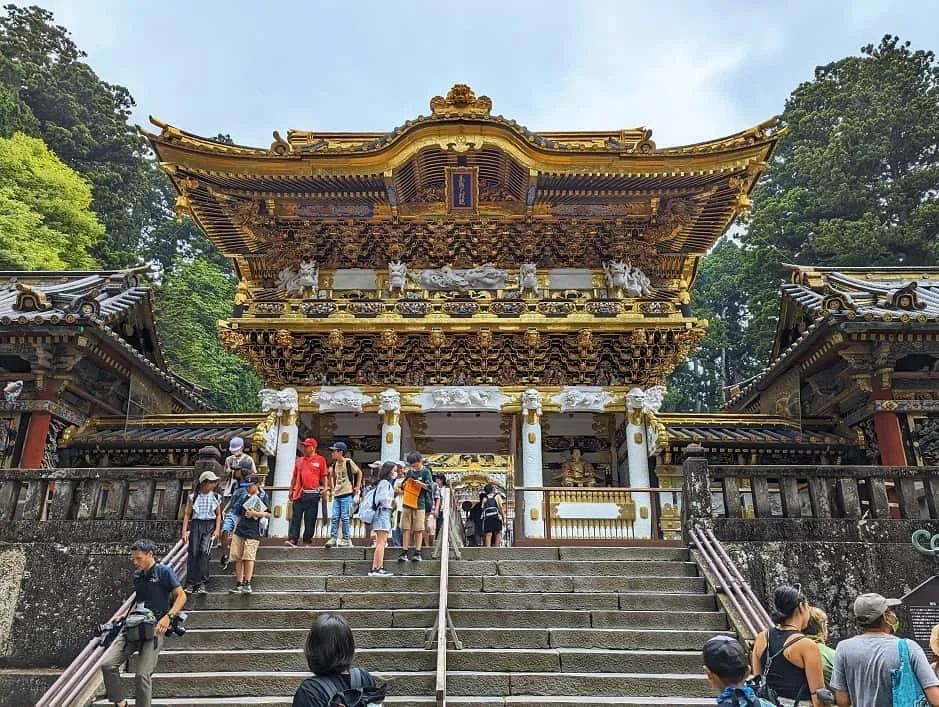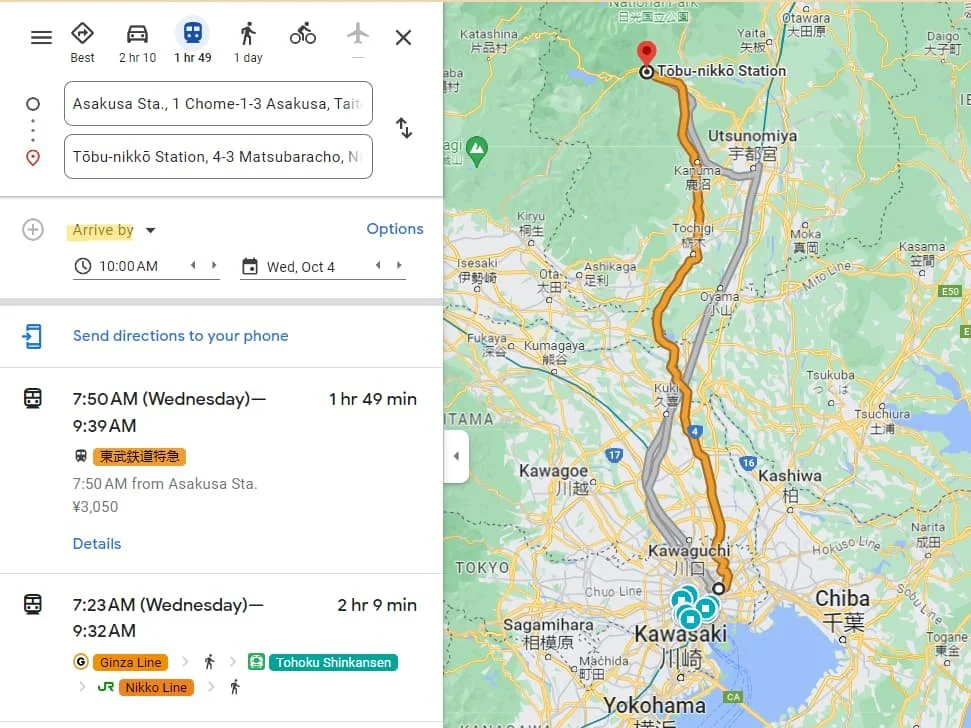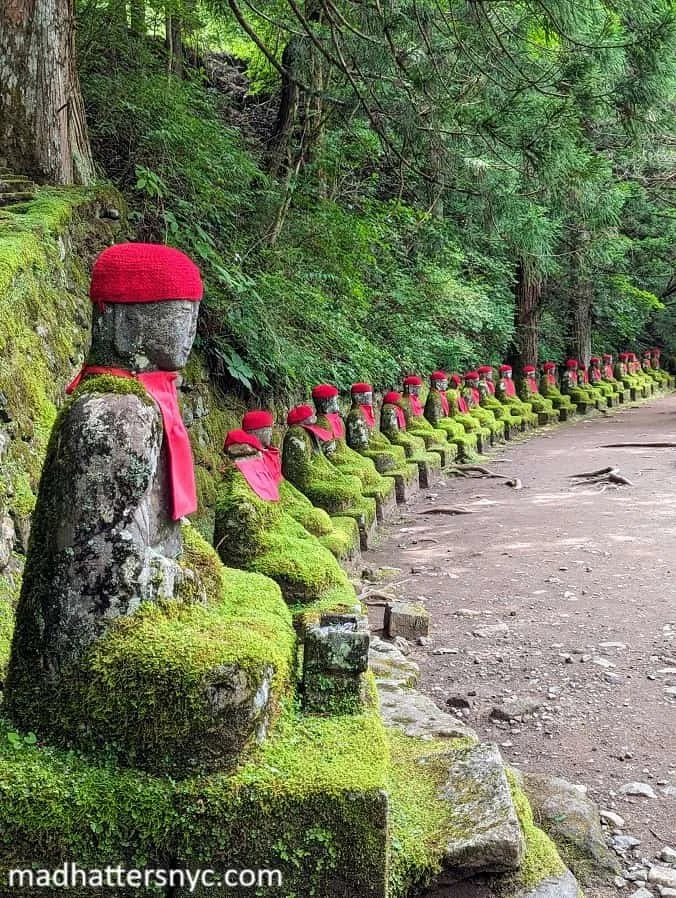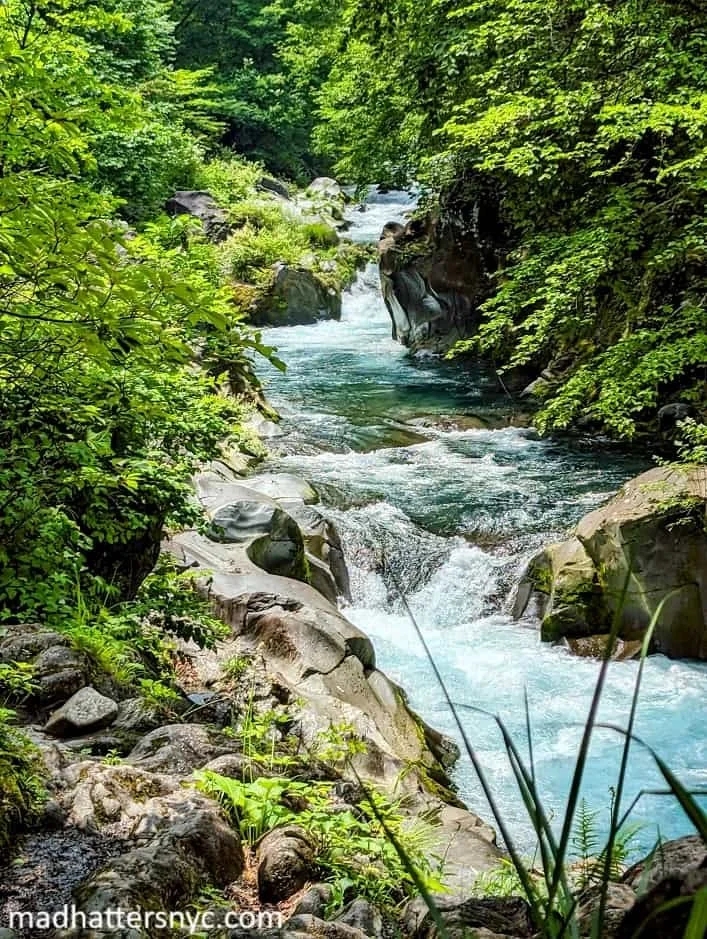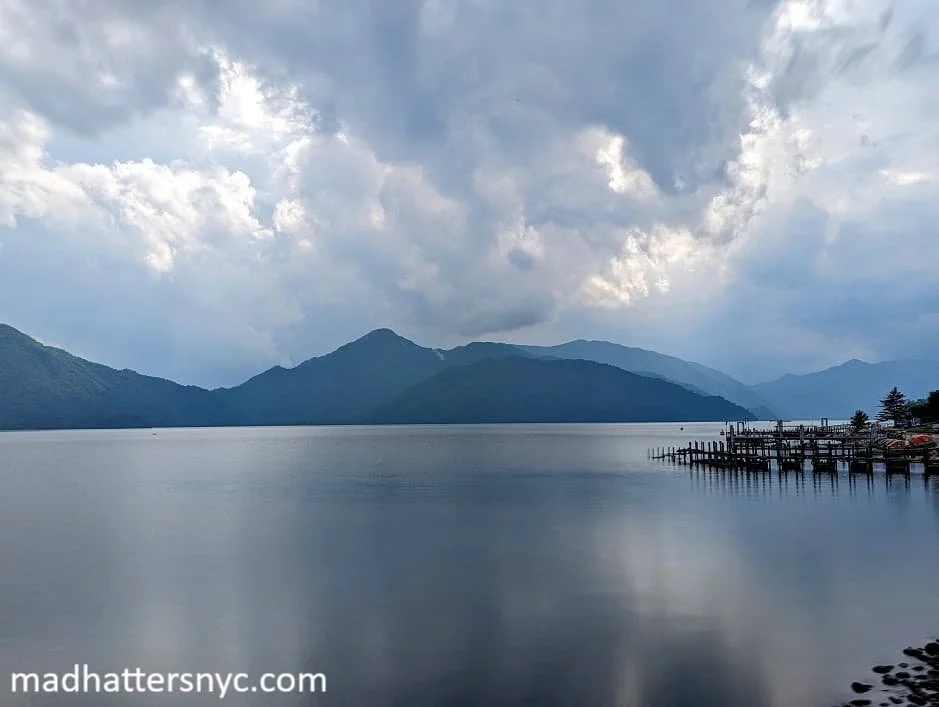Where Nature and Culture Collide: My Magical Day Trip From Tokyo to Nikko
Tokyo can fill an itinerary of any length, but when its bustling streets and neon lights become overwhelming, there's a perfect escape waiting just a train ride away. Nikko is a picturesque town boasting a treasure trove of cultural and natural wonders. In this guide, we'll explore why Nikko is a worthy day trip destination from Tokyo, highlighting the awe-inspiring landscapes and historic temples that make it a must-visit spot for every traveler seeking a taste of traditional Japan.
Where is Nikko?
Nikko is a small city in Japan’s Tochigi Prefecture, in the mountains north of Tokyo.
Is Nikko worth visiting?
Karamon Gate at Nikko Toshogu Shrine
Absolutely! Nikko is a captivating blend of natural beauty and rich cultural heritage. Nestled amidst lush forests and pristine lakes, Nikko offers a taste of Japan’s rich and varied natural landscape. Stunning waterfalls like Kegon Falls and the serene Lake Chuzenji allow you to truly appreciate the elevated role nature plays in Japanese culture thanks to Shintoism and Buddhism. In addition, the Toshogu Shrine makes Nikko a revered place of historical significance to both locals and visitors alike. The UNESCO World Heritage Site boasts intricate wood carvings and ornate architecture that will leave you wonderstruck. And while you can spend several days taking in everything Nikko has to offer, you can still enjoy much of its treasures on a day trip.
How far is Nikko from Tokyo?
Nikko is approximately 100 miles (160 km) north of Tokyo.
How do I get to Nikko from Tokyo?
By train
Train is the simplest and fastest way to get from Tokyo to Nikko. Both the JR East and Tobu Railway travel to Nikko. The JR route is materially more expensive, but may make sense if you have the JR Pass.
If traveling using JR East, hop on the Tohoku Shinkansen from Tokyo Station to Utsunomiya Station, then transfer to the Nikko line and end your journey at the JR Nikko Station. The entire trip takes 2 hours and the one-way fare is 5,880 JPY.
If traveling using Tobu Railway, there is a direct express train from Asakusa Station to Tobu-Nikko Station. The trip takes approximately 2 hours and the one-way fare is 3,080 JPY. If you’re staying on the western side of Tokyo, it might be faster to connect to the Tobu Railway at Kitasenju like I did. I detail this a little more in my step-by-step guide below.
By car
Driving to Nikko from Tokyo takes approximately 2.5 hours, but as with any major city, can vary widely depending on traffic. If you’re unfamiliar with driving in Japan, I wouldn’t recommend it. However, you can opt for a group guided bus tour or a private car tour.
By bus
Although public buses are available, the travel time is too long for a day trip.
Is a day trip from Tokyo to Nikko doable?
Shinyosha at Nikko Toshogu Shrine
Yes, definitely. I’ve detailed my day trip itinerary below, which took about 12 hours round trip, door-to-door. But there are plenty of opportunities to tailor it to your personal interests, or to modify it based on how much energy and time you’re willing to commit. You can reverse the order of activities, and add or eliminate stops to make it your own. If you’re venturing out on a weekend, adjust for longer lines and bigger crowds. Nikko is popular year-round because it’s also a wonderful spot to enjoy nature as seasons change.
A Step-by-Step Guide To My Nikko Day Trip Itinerary
Train travel from Tokyo to Tobu-Nikko
7:30 am During this particular trip to Tokyo, I was staying close to Shinjuku. Instead of traveling to Asakusa, it was faster for me to take the Tokyo Metro and connect to the Tobu Railway at Kitasenju. I knew I wanted to arrive in Nikko by 10:00 am, so I used the Google Maps “Arrive by” function and consulted the Tobu Railway train schedule just to be extra sure. I then purchased my ticket online in advance for the Limited Express train departing Kitasenju at 8:03 am arriving at Tobu-Nikko station at 9:40 am. Depending on your location, it might make more sense to start your journey from Asakusa Station.
Pro Tip: Please note you cannot use your SUICA or PASMO card for the Limited Express trains on the Tobu Railway. If you purchase your ticket online like I did, there is no need to print it out. You can just show your online confirmation at the station and board the train.
Purchase discounted Nikko travel pass
9:40 am Upon arrival at Tobu-Nikko Station, the Tourist Information Center was my first stop. Located at the entrance of the Tobu-Nikko Station, I popped in here to purchase the Chuzenji Onsen Free Pass, which offers unlimited rides on the tourist buses that travel between JR Nikko Station (Stop 1) and Osaki (Stop 31). All my desired stops were along this route, and the pass offered a significant discount over paying for each ride separately.
Pro Tip: You can also purchase your Tokyo return train tickets here. I didn’t know what time I would wrap up so I chose not to do so at the time of arrival, but if you have a firm schedule, it might be smart to purchase your tickets in advance to avoid lines later in the day.
Shinkyo Bridge
View of Shinkyo Bridge from National Route 119
10:00 am Once you exit the Tobu-Nikko Station, there is a covered bus stop area located directly across the street. I waited at Bus Stop 2B for the World Heritage Sightseeing Bus, and showed them my Chuzenji Onsen Free Pass when I boarded. Shinkyo Bridge was just 5 minutes away.
-
The Shinkyo Bridge, also known as the Sacred Bridge, is considered the symbolic entrance to Nikko's Toshogu Shrine. It was originally built in the early 17th century during the Edo period by the Buddhist monk Shodo Shonin, who is known for introducing Buddhism to Nikko. Over the centuries, the bridge has been reconstructed and restored several times.
There is a shrine at Shinkyo Bridge, and you can pay a fee to cross the bridge, though it’s not a throughway and you have to double back. I chose to simply pause at the bridge to take in the breathtaking views of the Daiya River and the surrounding forested hills before continuing my journey to explore Nikko's shrines and temples.
The Shrines and Temples of Nikko
Nikko-zan Rinno-ji Temple and Sorinto Pillar
10:15 am The Nikko UNESCO World Heritage Site encompasses the Nikko Toshogu Shrine, the Nikko-zan Rinno-ji Temple, the Rinno-ji Temple Taiyu-in Mausoleum, and the Nikko Futarasan Jinja Shrine. You can easily choose to spend your entire day trip exploring this area’s individual buildings and relics. I knew I wanted to see more of Nikko, so I limited myself to the two main sites: Nikko Toshogu Shrine and Nikko-zan Rinno-ji Temple.
-
The Toshogu Shrine is dedicated to Tokugawa Ieyasu, revered for unifying Japan during a period of civil strife. He established the Tokugawa Shogunate, which marked the beginning of the Edo period that lasted for over two and a half centuries (1603-1868) and brought an extended period of stability and peace to Japan. The Edo period moved the political center of Japan from Kyoto to Edo, or modern-day Tokyo. Before his death in 1616, Tokugawa Ieyasu expressed a desire to be enshrined in Nikko because of its natural beauty and serene surroundings. He believed that Nikko's tranquil atmosphere would be a suitable final resting place for him.
-
Nikko was already considered a sacred and spiritually significant location long before the establishment of Toshogu Shrine. The area had been associated with Shugendo, a form of Japanese mountain asceticism. Rinno-ji Temple was founded in the 8th century by the Buddhist monk Shodo Shonin, and it played a vital role in spreading Buddhism in the region.
Nikko-zan Rinno-ji Temple Garden
I began at the Nikko-zan Rinno-ji Temple, which is geographically closer to the entrance. There is an optional add-on to the regular ticket price for the Treasure House and Garden (300 JPY), which I highly recommend. I started my visit in the garden, and had it almost completely to myself. When I paused at the edge of the pond, several giant carp appeared to approach, which took me completely by surprise. I then noticed a small shelf with little containers of fish food nestled among the greenery, so I left some cash and fed the hungry carp.
Throughout the site, there are QR codes that link to a detailed guide with helpful historical information in multiple languages. After making my way through the Hall of the Three Buddhas and around the Sorinto Pillar, I headed over to the Toshogu Shrine.
Nikko Toshogu Shrine Five-Story Pagoda
The five-story Chinese zodiac pagoda is pretty breathtaking when you first lay eyes on it, but it’s only a taste of what’s to come. As soon as I purchased my tickets and entered through the front gate, I rented the audio guide (500 JPY rental fee, along with a 500 JPY deposit). The audio guide does a great job of highlighting each stop and its significance, which ensures you don’t miss any of the thoughtful details.
Please note that the Okusha, or Inner Shrine, where the grave of Tokugawa Ieyasu lies, involves a climb up 207 steps. If you’re not comfortable with that, there is still much to enjoy at ground level, from ornate gates to intricate carvings and elaborate paintings.
All in all, it took me a little over 2 hours to cover both Nikko-zan Rinno-ji Temple and Nikko Toshogu Shrine.
Yuba Udon Lunch at Santen Kantaro
Riverfront dining at Santen Kantaro
Yuba Udon at Santen Kantaro
12:30 pm My next stop was the Kanmangafuchi Abyss, but it was time for lunch. Santen Kantaro is a quaint little shop along the Daiya River, perfectly located on the way to the Abyss. Its specialty is yuba, also known as "tofu skin" or "bean curd skin," which is made from the skin that forms on the surface of soy milk when it is heated. It is a specialty in Nikko because the pristine mountain streams and rivers are known to produce excellent soybeans, which are the primary ingredient for making high-quality yuba.
I opted for the Yuba Udon, prepared by the elderly gentleman who appeared to be the sole proprietor. The river view and breeze made it a perfect spot to rest and enjoy the meal.
Kanmangafuchi Abyss (Kanman Gorge)
Jizo statues at Kanmangafuchi Abyss
View of the Kanman Gorge
1:00 pm Kanmangafuchi Abyss is a narrow gorge created by an eruption from Mount Nantai thousands of years ago. There are hiking trails and easy walking paths that allow visitors to venture deep into the gorge, providing a close-up view of the river, waterfalls, and rock formations. While primarily appreciated for its natural beauty, the Kanmangafuchi Abyss is also a place with deep spiritual significance. The gorge was developed by a disciple of Tenkai, the Buddhist monk who was both a powerful religious leader and a trusted advisor to the Tokugawa shogunate. Particularly striking is the long row of stone Jizo statues, donning red caps and bibs. Jizo is the guardian deity of children that is commonly found in Japan’s cemeteries.
Although it’s only a short distance from the shrines and temples of Nikko, Kanmangafuchi Abyss is surprisingly quiet. While I hesitate to call it off the beaten path, it was a nice reprieve from the crowds.
Bus travel from Nikko’s shrines to Lake Chuzenji
1:30 pm After Kanmangafuchi Abyss, I backtracked and made my way to Tobu Bus Stop 8 located just outside the World Heritage Site shrines on National Route 120. I knew I was heading west, so I waited on the south side of the street. The buses run 5-15 minutes apart. The bus travels up a winding path, and the scenery is magnificent.
Pro Tip: If you plan on taking the Akechidaira Ropeway, exit at Bus Stop 24. The Akechidaira Ropeway is only a stop on the way to Lake Chuzenji and not on the way back. It promises amazing views, and I spent most of the bus ride trying to convince myself to get on the cable car despite my fear of heights. But the visibility on that particular day was fairly low so I used it as an excuse to pass.
Kegon Falls and Lake Chuzenji
Kegon Falls
From the paid observation deck at Kegon Falls
2:15 pm Mount Nantai is now dormant, but Lake Chuzenji, Kegon Falls and Kanmangafuchi Abyss are the results of its volcanic activity thousands of years ago. Lake Chuzenji is nestled within the caldera, or collapsed volcano, and its water flows down through the rugged terrain and eventually plunges over a steep precipice, creating the majestic Kegon Falls.
To get to Kegon Falls, exit at Bus Stop 26 for Chuzenji Onsen. The bus drops you off at a bus terminal, and you’ll return here for your bus ride back to Tobu-Nikko Station. Once you disembark, continue walking east along National Route 120. It’s a short 5-minute walk to Kegon Falls.
There is a free viewing area of Kegon Falls, and it offers a close-up view of the amazing waterfall from above. But the paid viewing area offers an opportunity well worth the expense if you can afford it: a ride in an elevator that is built into the bedrock. Built in 1930, the elevator is one of the oldest in Japan, and it only takes 1 minute to travel down 320 feet. The observation deck in the paid viewing area consists of two levels, offering two different perspectives of the majestic waterfall.
After exiting Kegon Falls, I walked west, passing the bus terminal and heading to Lake Chuzenji itself. The walk only takes approximately 10 minutes. Between late April and early November, you can hop on a 55-minute scenic boat tour which travels to Shobugahama Beach, Embassy Villa Memorial Park and Tachiki Kannon. The roundtrip ticket allows unlimited hop on and hop off privileges, so you can explore any of the destinations if desired. The last cruise leaves at 3:30 pm.
After a quick stop to admire the view, I also noticed dark clouds were closing in.
Bus travel from Lake Chuzenji to Tobu-Nikko Station
3:15 pm I made my way back to the bus terminal, pausing at a few shops along the way. The bus heading back to the Tobu-Nikko station departs from Bus Stop 26B.
Explore Nikko specialties
4:00 pm Once back at the Tobu-Nikko station, I returned to the Tourist Information Center to purchase my train ticket to Tokyo. If you have additional time before your train leaves, use it to discover some of Nikko’s other specialties.
Manju is a traditional Japanese sweet which features a doughy exterior with sweet bean paste fillings in various flavors like matcha and sweet potato. Across the station, Sakaeya Fried Yubamanju offers a Nikko twist by encasing the confection in yuba and deep frying it to create a treat that is crispy yet chewy, and sweet yet salty. If you can find a spot on the benches in front of the stall, enjoy it with a hot cup of tea.
Castella is a Japanese confectionery similar to sponge cake. Traditional Castella is baked in wooden molds, which give the cake a unique shape and a slightly crusty exterior while maintaining a soft, moist interior. At Nikko Castella, also minutes from the station, you can sample both honey and matcha varieties of this treat. Gold leaf versions of the cake make unique gifts.
If you’re shopping for souvenirs, you can find a variety of pre-packaged yuba snacks and pastries. Nikko is also known for its pickled vegetables and local sake.
Pro Tip: Most stores close around 5:00 - 5:30 pm.
7:00 pm I arrived back in Tokyo just in time for dinner.
Conclusion
Despite visiting Japan several times, I still feel there’s so much of the country I have yet to discover. But while I can relate to the FOMO, I also know you can’t run out of creative Tokyo itineraries. It’s easy to feel overwhelmed by the choices, but if you have a limited amount of time and want to explore beyond Tokyo, Nikko is an easy gateway to experience more of Japan’s history and culture. The historical significance, stunning landscapes, and delicious local specialties make Nikko an ideal destination for a memorable day trip from Tokyo.

